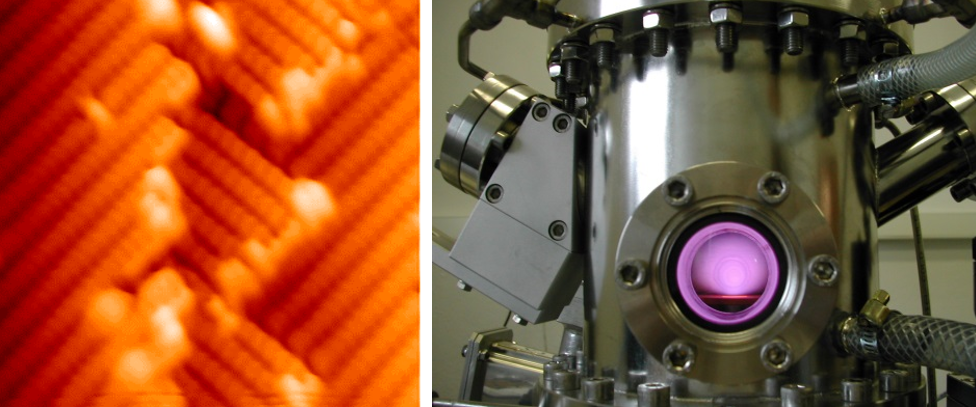Sujet de Stage niveau M1/M2 dans l’équipe Surface Interface Molécules & Matériaux 2D
The quest for ever smaller microelectronics is fast reaching its lower limit; the atom. As this continues, new materials such as graphene with exotic properties are replacing conventional semiconductors to improve the electronic, mechanical and optical properties. In this realm, diamond has many advantages and very few inconveniences. The attraction of diamond centres on the insulating character of the surface and the wide band gap of 5.3 eV. Diamond is one material capable of meeting the physical demands for future atomic scale technologies. In concert, enormous efforts are in progress to try to build a new generation of electronics from the atom up. Here, the Scanning Tunnelling Microscope (STM) is one of the best-placed tools available for monitoring and controlling the construction process. Normally, the inherent lack of electrical conductivity in insulators, such as diamond, would prevent the use of the STM. We have shown that the STM, in an unconventional resonant electron injection mode, can be used to study the clean insulating diamond surface [1], thus offering the opportunity for atomic scale studies on an insulating surface. This atomic resolution was achieved because of two striking properties; the exceptional narrowness of the standing-wave resonances above the vacuum level and the very long diffusion length of conduction band electrons in diamond single crystals. Following our discovery, the Atomic Force Microscope (AFM) was also able to image diamond surfaces at the atomic scale [2].
During the Master internship, the student will operate a hydrogen plasma machine to prepare the hydrogenated diamond surfaces. The diamond surfaces will be characterized ex situ by AFM in air. Applicants should have a Bachelor degree in physics, chemistry, materials science or engineering or a M1 in the same subjects. The potential candidate must be highly motivated towards experimental work. This project is part of a collaboration with a research group at the University of Osnabruck in Germany [2].
Stipend: 660 Euros per month
Contact:
Supervisor: Dr. Andrew Mayne
e-mail:
Laboratory: Institut des Sciences Moléculaires d’Orsay, UMR 8214, Bât. 520, Université Paris-Saclay, 91405 Orsay, France
[1] K. Bobrov, A.J. Mayne, G. Dujardin, Nature, 413, 616 (2001)
[2] M. Nimmrich, et al. Phys. Rev. B 81, 201403 (2010)
